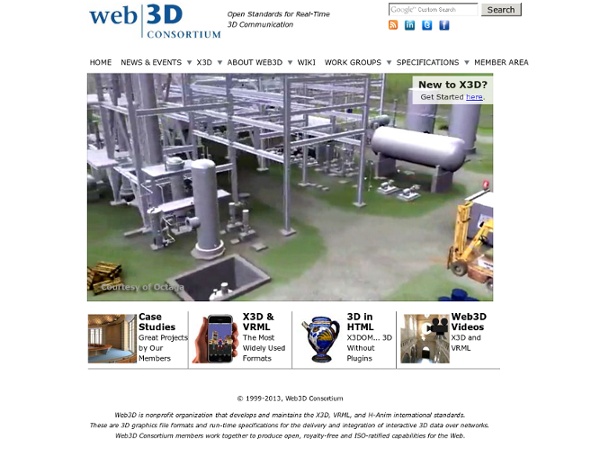Zoom
Trash
Related:



Making Virtual Reality Less Virtual A decade ago, the dream of a separate, virtual world didn’t seem so far-fetched. Second Life, a digital world where people could create and interact with human-like avatars, seemed poised to blow up. A magazine wrote a cover story about a Second Life millionaire. Politicians made policy announcements in the virtual world. Reuters, CNN, Wired, and other media outlets built bureaus there. Second Life never took off as predicted. But that might be changing. Rosedale is also back on the virtual reality scene with the new venture. Even if Rosedale is right, that’s probably a while away. At this early stage in the gestation process, though, it’s fascinating to take a closer look at Rosedale’s mission, because it exposes a lot of basic, mind-bending questions. Like many other new technologies, Rosedale predicts, the rise of virtual reality will come not in a wave, but with a creep—as it becomes more useful, it will start to seem more normal. More From The Atlantic
start [VIBE] In the News Virtual Worlds as Venues for Public Archaeology at Society for Historical Archaeology Blog By Beverly Chiarulli and Marion Smeltzer 3 virtual environment platforms that inspire learning at Hypergrid Business News By Ann Cudworth Recent Speaking Events or Publications Congratulations to Dr. Design and Evaluation of a Simulation for Pediatric Dentistry in Virtual Worlds Ustream recordings (right click and open in new tab/page) OpenSimulator Community Conference 2013: The Fantastic Voyage of Converting to OpenSim for Biology and Archaeology Education VSTE: Stephen Gasior, Sept. 16, 2013 SIGVE Speaker: Stephen Gasior, Sept. 17, 2013 Second Life - Staff House OpenSim VIBE Grid Login-URI: Registration Web Interface: just put URI in Grid manager and registration is splash page Grid Name: vibe Hypergrid Address: vibe.bio-se.info:9000:VIBE Please see the Hypergrid page for more information on how to access the VIBE grid. About Facebook and SecondLife Builders Archeology
Ubick, une solution de cartographie en 3D 100 % française Cette vue du quartier de la tour Montparnasse à Paris (XIVe arrondissement) illustre la qualité et le niveau de détail que peut offrir la base de données cartographiques Ubick. Elle couvre déjà 30 villes françaises. © Ubick Ubick, une solution de cartographie en 3D 100 % française - 2 Photos Lorsqu’on parle de cartographie numérique en 3D, on pense généralement à des services comme Google Earth, Apple Plans ou Nokia Here. On peut désormais ajouter Ubick, un service de cartographie 3D haute précision entièrement conçu en France. Ubick dispose d’un mode 3D stéréoscopique dont on peut profiter en se servant de lunettes anaglyphes. Cinq caméras embarquées pour Ubick Créée en 2001, cette société dont le siège se trouve à Limoges (Limousin) est spécialisée dans la cartographie aérienne par photo numérique et lidar. Pour réaliser les prises de vue aériennes destinées à Ubick, Imao a aménagé l’un de ses avions avec un système comportant cinq caméras et une centrale inertielle. Sur le même sujet
FrontPage You have arrived at the permanent landing page for EVO sessions. Note: If you cannot see all of the text on the right, click on the tiny arrow above the words Page History in the upper right corner to expand to Fullscreen View. Call for Participation Electronic Village Online (EVO) 2020 For five weeks in January and February, TESOL experts and participants from around the world engage in collaborative online discussions or hands-on virtual workshops of professional and scholarly benefit. Sessions are free and open to anyone around the globe. Convention in order to participate. We invite you to choose a session from this year's offerings listed below. Click on the link for the session you want to attend, scroll down to the bottom of the page and find the joining instructions for each session there. The Electronic Village Online Hashtag is: #evosessions Click on the title of a session below to view the complete session description. Thank you for helping spread the word!
Trucs en vracs | Astuces pour opensim Evénement virtuel 3D : Fédérez votre communauté tout au long de l’année Les chiffres clés du marché des salons virtuels Les événements virtuels représentent 3% du marché de l’événementiel mondial et 75% des entreprises sont intéressées par utiliser le virtuel dans leur stratégie de marketing événementiel. Ce marché est en pleine expansion avec une prévision de croissance de 53% pour 2016 (vs 2012) soit 20 milliards de dollars sur cette même période. Et cela est très avantageux puisque les coûts sont réduits de 25 à 90% par rapport au budget nécessaire à un événement physique (Virtual Events Market Insight, Virtual Edge Institute, janvier 2013). Événements physiques vs événements virtuels : quelles différences ? Un événement virtuel, c’est quoi ? Une solution flexible à moindre frais complémentaires aux traditionnels événements physiques ? De nombreux avantages… Vous allez nous objecter : « Cela est intéressant mais un événement virtuel ne permet pas d’entrer directement en contact avec le visiteur ».
Emerging Media and Innovation Le tutorat à distance dans les mondes virtuels